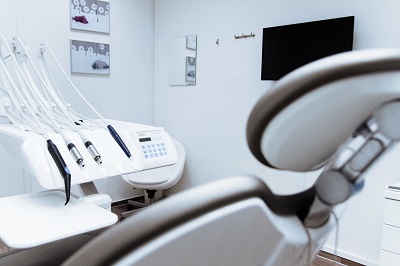To apply for Class C medical device registration in Indonesia, you will need to follow a structured process via the National Agency of Drug and Food Control (BPOM), which operates under the Ministry of Health (MOH). The registration process is done through BPOM's e-Registration System.
Here’s a step-by-step guide on how to apply and where to apply for the registration:
Where to Apply:
BPOM's e-Registration System:
- The e-Registration System is an online portal provided by BPOM for the registration of medical devices in Indonesia.
- All submissions for Class C medical device registration must be made through this online system. BPOM does not accept physical submissions.
BPOM Website:
- You can access the e-Registration system through the official BPOM website:
- BPOM Official Website: https://www.pom.go.id/
- You can access the e-Registration system through the official BPOM website:
Local Authorized Representative (AR):
- Foreign manufacturers are required to appoint a local Authorized Representative (AR) in Indonesia to handle the registration process. The AR will submit the application and handle all communications with BPOM on your behalf.
BPOM's Regional Offices:
- For local manufacturers or if additional support is needed, BPOM has regional offices where you can seek assistance, but the main registration process is done online.
Steps for Class C Medical Device Registration in Indonesia:
Step 1: Appoint an Authorized Representative (AR) (for foreign manufacturers)
- Foreign manufacturers must appoint a local AR in Indonesia. The AR is responsible for submitting the application on your behalf and ensuring that all regulatory requirements are met.
- The AR must be a legally registered entity in Indonesia and knowledgeable about medical device registration processes.
Step 2: Prepare Required Documentation
- Prepare all necessary documents for the registration, including:
- Product Technical File (device description, classification, intended use, etc.).
- Clinical Evaluation Report (clinical data supporting safety and efficacy).
- Risk Management File (risk assessment and mitigation strategies).
- Labeling and Instructions for Use (IFU) in Bahasa Indonesia.
- Certificate of Free Sale (CFS) from the country of origin.
- Manufacturing License and GMP Certificate.
- Biocompatibility Test Results (if applicable).
- Performance Test Data (if applicable).
- Regulatory Certifications (if the device has been approved elsewhere, such as FDA or CE mark).
- All documents must be translated into Bahasa Indonesia (except for documents already in English or other recognized languages).
Step 3: Register on BPOM's e-Registration Portal
- The Authorized Representative (AR) must create an account on BPOM's e-Registration system.
- Submit the application by filling out the online forms and uploading all required documents. The documents should be in PDF format and organized according to BPOM's specifications.
How to Register:
- Visit the BPOM website and go to the e-Registration portal.
- Create an account or log in if you already have one.
- Complete the online application form with the relevant information about the medical device.
- Upload the required documents as specified by BPOM.
- Ensure that all fields are completed accurately to avoid delays.
Step 4: Pay the Registration Fee
- BPOM charges a registration fee for the submission of medical device applications.
- The fees vary depending on the device classification and the complexity of the application.
- The payment is typically made through the e-Registration system, and a receipt of payment will be generated.
Step 5: BPOM Review and Evaluation
- BPOM will review the application and the submitted documents. During this review, they may:
- Request additional information or clarification.
- Conduct tests or inspections (especially for high-risk devices).
- Evaluate compliance with local regulatory requirements.
- For Class C devices, BPOM's review process may be more detailed and may take longer due to the higher risk associated with these devices.
Step 6: BPOM Inspection or Testing (if required)
- BPOM may require additional testing or an inspection of the manufacturing facility to verify compliance with Good Manufacturing Practices (GMP).
- If testing or inspections are requested, ensure that you comply promptly to avoid delays.
Step 7: Receive Marketing Authorization (NOM)
- Once BPOM has completed the review and is satisfied with the submission, they will issue a Marketing Authorization (NOM - Nomor Registrasi Obat dan Makanan).
- The NOM allows you to legally sell and distribute the medical device in Indonesia.
- The Marketing Authorization is typically valid for 5 years, and you can renew it before expiration.
Step 8: Post-Market Surveillance
- After receiving the NOM, you are required to follow Indonesia’s post-market surveillance regulations.
- This includes reporting any adverse events, device recalls, or safety concerns to BPOM.
- BPOM may also conduct periodic audits or inspections to ensure ongoing compliance.
Summary of Steps to Apply:
- Appoint a Local Authorized Representative (AR) (for foreign manufacturers).
- Prepare all required documentation (technical file, clinical data, risk management, etc.).
- Register on BPOM's e-Registration portal and submit the application online.
- Pay the registration fee via the e-Registration system.
- BPOM review and evaluation of the application.
- Undergo additional testing or inspections (if required by BPOM).
- Receive Marketing Authorization (NOM) from BPOM.
- Comply with post-market surveillance requirements after approval.
Where to Apply
- BPOM Website and e-Registration System: The application is submitted online through BPOM's official website:
- BPOM Official Website: https://www.pom.go.id/
By following these steps and working closely with a knowledgeable Authorized Representative (AR), you can successfully navigate the Class C medical device registration process in Indonesia. Let me know if you need more details on any specific part of the process!

Whatsapp or Wechat:+86 15816864648;email address:hito.lin@grzan.cn
.png)
.jpg)
.png)

.png)